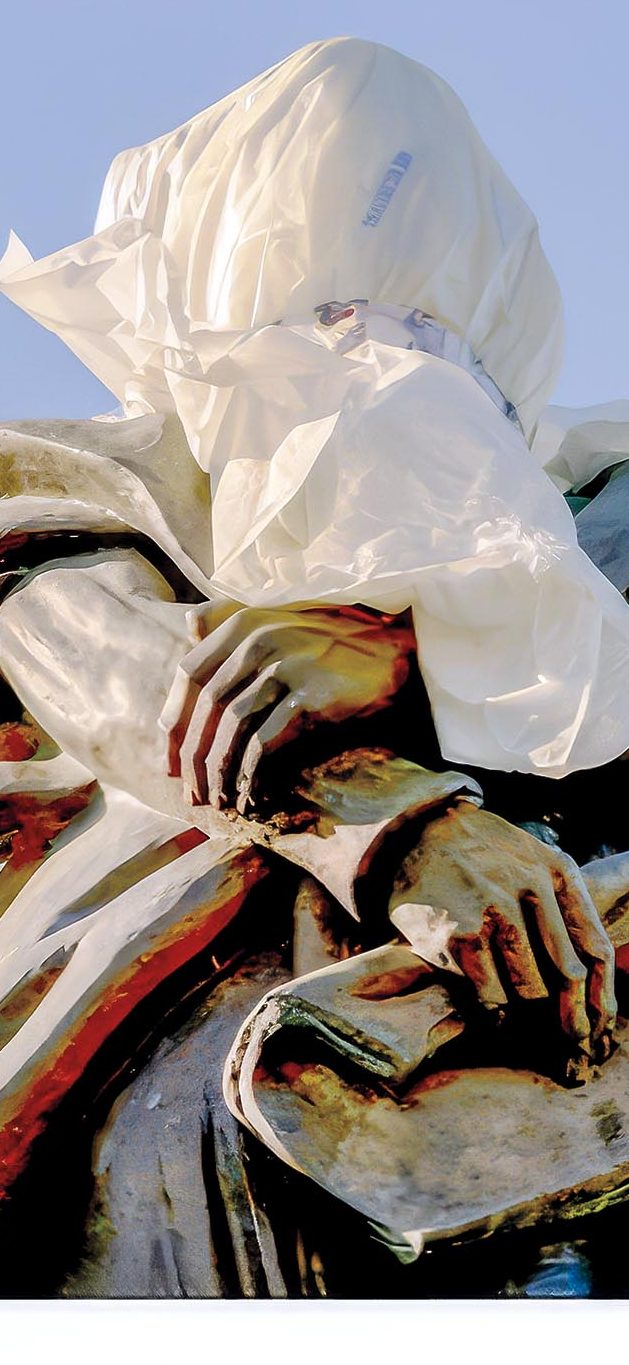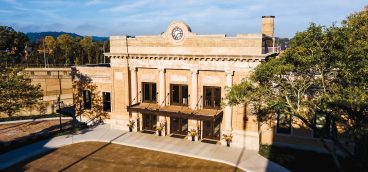Noteworthy

Different Views of Christopher Columbus
On Oct. 12, in Madrid, Spain, an enormous and colorful parade of national pride snaked its way through the streets of the Spanish capital. The “National Day of Spain” is the country’s biggest civic holiday, celebrating Spanish history and achievements and reconfirming Spaniards’ commitment to the nation’s future. The date commemorates the discovery of the Americas by Christopher Columbus in 1492. Towering statues in Madrid and Barcelona recognize Columbus, one of the most historically important human beings in the last 500-plus years. At the same time in October, Pennsylvania’s Commonwealth Court was hearing arguments on the fate of Pittsburgh’s relatively diminutive 13-foot Columbus statue. Three years ago, bowing to a shrill minority, Pittsburgh’s art commission decided the statue should be removed from public view. Now Pittsburgh’s Columbus statue stands with a white plastic bag on its head, as if he were a Klansman. We hope that, very soon, the citizens and “leaders” of the Pittsburgh region will respect history and have the backbone to resist efforts of vocal minorities to remove statues that don’t conform to their morality of the moment. Historic statues give cities character. Removing them makes cities sterile. Instead of tearing down what you don’t like, why not raise money to build a statue commemorating what you do like? Add to Pittsburgh. Don’t subtract from it.

A statue honoring Columbus in Pittsburgh now sports a plastic bag over its head.
Allegheny RiverTrail Park
Nestled along the shore of the Allegheny, the Allegheny RiverTrail Park is making remarkable progress, continuing its dramatic transformation of former scrapyards into a wonderful recreational space that also serves as a crucial link for a bike trail network, aiming to eventually connect to the Great Allegheny Passage in Millvale. In 2022, the Park acquired an additional six acres and 1.5 miles of trail easement, connecting Aspinwall, O’Hara Township, and Sharpsburg. In May, the civic leaders spearheading this project broke ground for an exciting new phase — intent on becoming the community’s “Front Yard” along the Allegheny. This new development includes two overlooks, a hillside slide, a plaza, a grand riverside deck and a 1.5-mile trail extension. It will eventually connect to the Brilliant Line, a nearly 4-mile rail corridor whose purchase was recently finalized. It’s all part of a larger $8.5 million capital campaign for a project that is a shining example of realizing and emphasizing this region’s long-latent natural assets. To learn more and help support this project, visit https://alleghenyrivertrailpark.org
Immigrants: We Need Them
Readers may notice two stories in this issue regarding the contributions and experiences of immigrants in Pittsburgh. Why? Because this region needs immigrants in order to turn around its population loss crisis. New research from the American Immigration Council shows that immigrants in Pittsburgh contributed approximately $3.5 billion to the city’s gross domestic product (GDP), or 11.1 percent of its GDP. The new report, New Americans in Pittsburgh, was prepared in partnership with the City of Pittsburgh’s Office of Immigrant and Refugee Affairs. Between 2014 and 2019 the population of Pittsburgh decreased by 1.3 percent and the immigrant population grew by 18.9 percent. The report claims that without immigrants coming to the city, the total population would have decreased by 2.7 percent.
New Broadcasting Museum
In East Pittsburgh, a group of supporters announced the creation of the Pittsburgh-based National Museum of Broadcasting. The museum-to-be salutes the origins of broadcasting, which occurred Nov. 2, 1920 when on the rooftop of the former Westinghouse Electric and Manufacturing Company, Westinghouse employees broadcast the returns of the Harding-Cox presidential election over the airwaves that became KDKA Radio.
Inscrutable Actions
In the past dozen years, Pittsburgh Quarterly has chronicled the civic cost of Pittsburgh’s woefully inadequate efforts to address its vacant and abandoned properties. Three years ago, we wrote a story comparing the number of properties Cleveland’s land bank returned to the tax rolls with the number for Pittsburgh’s land bank. The headline was “Cleveland 11,000 – Pittsburgh 1.” Compared to efforts in Cleveland and Detroit, it’s almost as if Pittsburgh officials have purposefully blocked efforts to return unproductive and deteriorating properties to viability. In September, a Post-Gazette investigation showed that just as the Pittsburgh Land Bank is finally ready to start doing its job, Pittsburgh city government is jacking up prices for blighted city-owned property to levels no reasonable buyer would pay. In one instance, the city increased the proposed selling price to $80,000 – more than 30 times its last selling price of $2,600 in 2016. It’s difficult to tell which is more egregious, the city’s actions or its refusal to answer for them. Meanwhile, more time passes and properties that might have been rescuable fall to ruin, piling unnecessary hardship on residents in the city’s poorest neighborhoods.
A Christmas Highlight
For the 23rd year, the Eastern Atlantic States Regional Council of Carpenters has put its apprentices to work building the Pittsburgh Creche, which has become a Downtown tradition since it first opened in 1999. The creche features 22 hand-crafted figures and measures 64 feet wide, 42 feet high, and 36 feet deep. It weighs about 32 tons and is the only sanctioned replica of the creche at the Vatican. Each year, it’s a team effort of the apprentices and numerous Christians to recreate the nativity scene at the U.S. Steel Plaza, Downtown. Merry Christmas!









